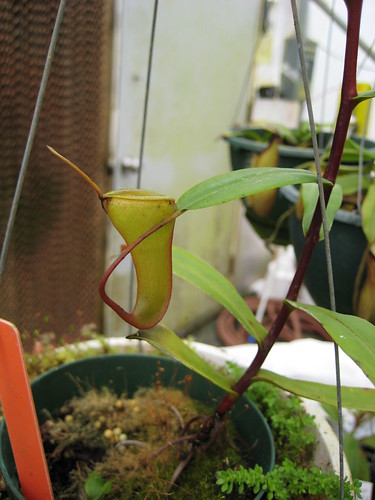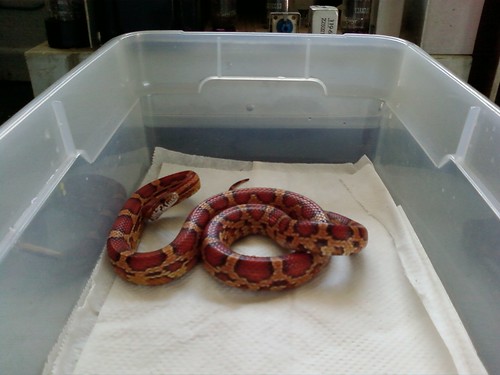Another dog post – and there may be more coming – yikes! I’ve been looking at pedigrees and got a note from a friend recently reminding me that Westminster is next week – I figure there’s no time like the present to lay out my views on dog ‘assessments’.
First – why evaluate? Often, it’s done as part of a breeding program – does the dog look right? Can it do what it was bred to do? Breeding isn’t always the motivation, though; obedience trials can show how biddable a dog is, but they can also showcase the two-legger’s training skills. A particular activity with a particular breed falls somewhere on a breeding <-> skills continuum. Excellence in the obedience ring is an important data point if I’m looking at Border Collie pedigrees (teamwork/intelligence being a key element of what I think of as good Border Collie-ness) – the same attribute in a Bluetick Hound? Not so much – that one is really a testament to trainer effort. I’ve got a foot in both boats – as a obedience trainer and instructor it’s important for me to demonstrate competence by titling dogs – as a bird hunter, I need to look at breedings with an eye towards field work.
Why would a breeder want to formally test their dogs? Lots of reasons – if we’re talking about AKC registered dogs (the vast majority of ‘purebred’ pups in the US) it’s important to remember that the cosmystical papers (as in, “My dog’s a purebred, I have his papers.”) mean one thing – sire and dam have papers. Even the sire and dam thing was a little iffy in years past, but the AKC is doing more DNA testing to keep their brand safe. Papers do not mean that the dog can herd stock or find birds or tree raccoons – they certify that the parents were AKC registered, period. From the Designer Dogs article referenced below:
For example, the A.K.C. has no choice but to register anything that’s the product of two registered German shepherds as a German shepherd. And yet Mark Neff, a canine geneticist at the University of California at Davis, says, “I can go out and find the most bizarre German shepherds in the world, and I can start crossing and inbreeding them,†selecting for, rather than against, their eccentricities. Gradually, he could produce some deviant dogs. They could be lithe and spotted. They could be dwarfs. “I would be despised,†Neff said, but his dogs would be German shepherds by virtue of their all-German shepherd pedigrees.
If the dog belongs to a different registry (breed clubs, Field Dog Stud Book) there may or may not be more going on than there is with the AKC – I’ll talk a little about German-affiliated US clubs in a bit. A breeder could actually work his or her dogs – AKC or not – and demonstrate to potential buyers that the breeding has the right stuff – a common occurrence when looking at a working breed. There may be issues with relying exclusively on this approach – distance problems (if one is really interested in pudelpointers for example, but finds that most of the breeders are in the upper midwest) and that always perilous affliction – kennel-blindness. I assume that any breeder I speak with is going to think pretty highly of his dogs (if not, I’m outta there); sometimes that regard for one’s own gets a little out of control and too much is done to show the dog in the most favorable light. So… for a bunch of reasons, it seems like it would be nice to have some objective measures of a particular dog – in come the shows, trials, etc.
I classify dog evaluations into 2 groups – unfortunately, the names of the evaluations don’t give you a hint as to which class they fall into. First, we have what I’ll call competitive evaluations: conformation shows (think Westminster) and field trials, for example. The second group are standards-based evaluations like hunt tests and obedience trials. In a competitive evaluation there are a fixed number of ribbons to be awarded – 1st place, 2nd place, 3rd place, the rest of you go home. Standards do come into play, but dogs are primarily judged against each other – in a show, the question is ‘who is the most Pointer-y of all the Pointers here today?’ The judge can withhold ribbons (at least in a conformation show) if none of the dogs are up to snuff, but to say that’s a rare event would be understatement. In a standards-based evaluation the number of ribbons can range from zero to the number of dogs entered. If your dog does what it’s supposed to do well enough, it qualifies. There may also be 1st, 2nd, 3rd places, but a qualifying score – even if it’s not within shouting distance of the first-place performance – gets you closer to a title.
The big problem with competitive evaluations can be summed up in a word: more. If some coat on a dog is good, more must be better. If a little slope to the dog’s topline is good, more must be better. If medium range and some bird finds are good, huge range and more finds must be better. The testing method encourages, even drives, extremism and helps cause the show/field split that has divided some kinds of dogs into two separate breeds. Nobody, seeing an AKC show English Setter and an American Field (FDSB) setter for the first time, should be expected to realize that – up until quite recently – they were the same dog. Don’t get me wrong – there are clubs that are doing their darndest to keep work and conformation together in one dog, but more is a powerful force for fragmentation.
I think standards-based evaluations do a much better job establishing a baseline for what a breed should be. Dogs who fit the standard are recognized, those who don’t, aren’t. Here’s where I think the German breed clubs and their foreign affiliates do a nice job. They evaluate, against standards, for both conformation and performance. If a dog looks like a, b and c and has demonstrated it is capable of doing x, y and z then it gets a check mark for being a breedable example of Schleswig-Holstein Goose Dog (don’t bother Googling – I made it up – I hope). A key word here is baseline – one needs to establish an envelope – inside you’ve got German Shorthairs, with some healthy variation – outside, other dogs.
Horses for courses – within the broad boundaries of a breed, it’s up to breeders and to some extent, the breed club to decide what they’re all about. A falconer hawking big prairie grouse and a gun hunter crawling around a New England woodcock cover may have different needs regarding range and thus may choose different breeds or breeders. One thing’s for sure though – if they buy a pointing dog, they need a dog that will point feather without being taught – baseline for not just the breed, but the type.
As I mentioned below (in comments, especially), I’m hoping to be able to share a couple field dog examples over the next couple years – don’t touch that dial.

















